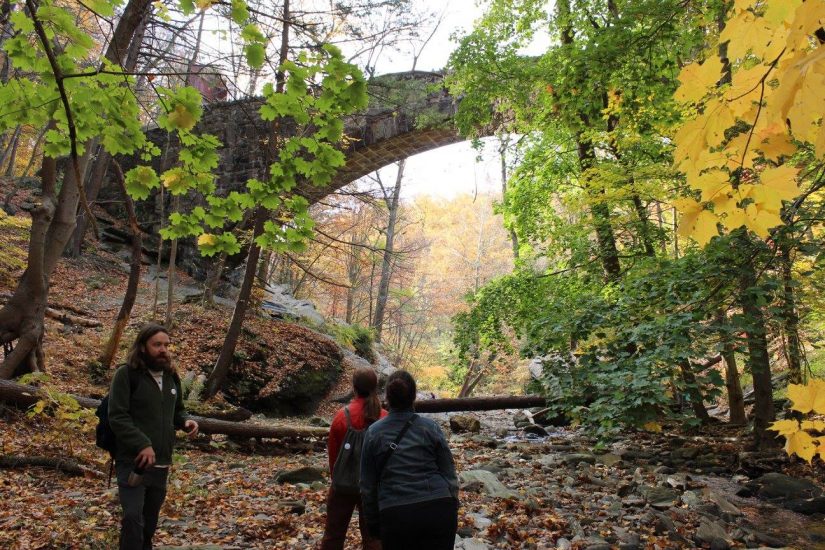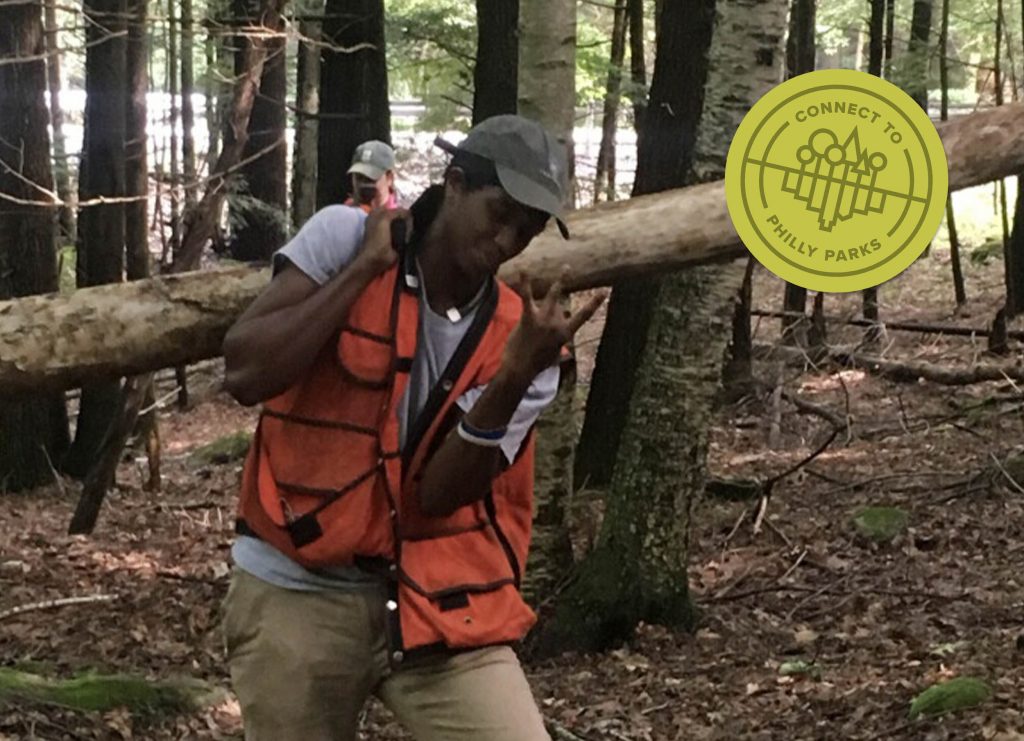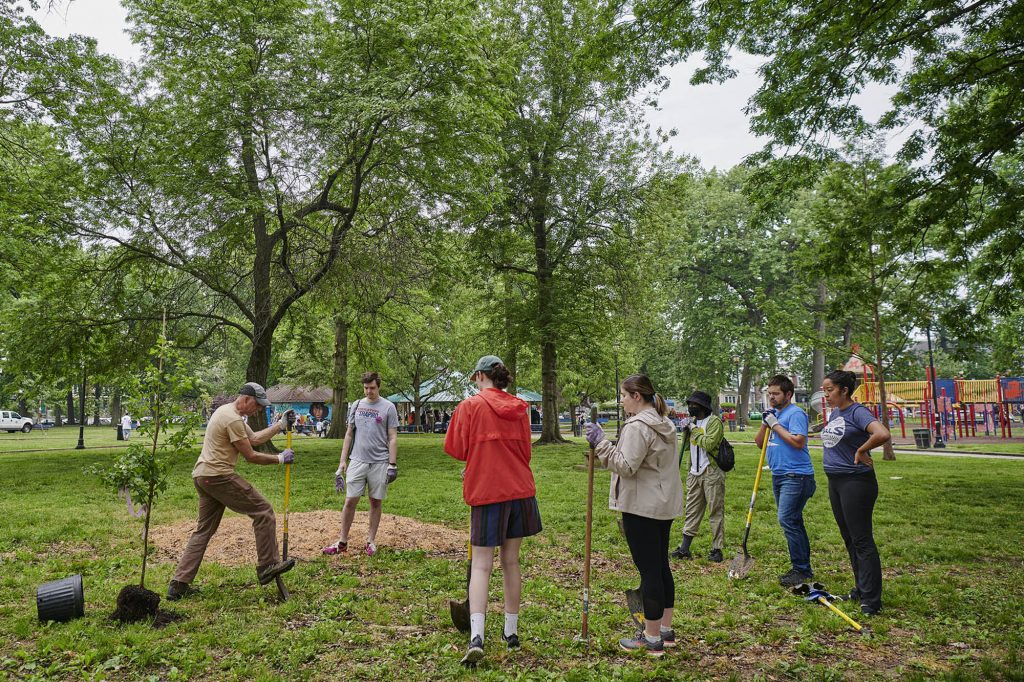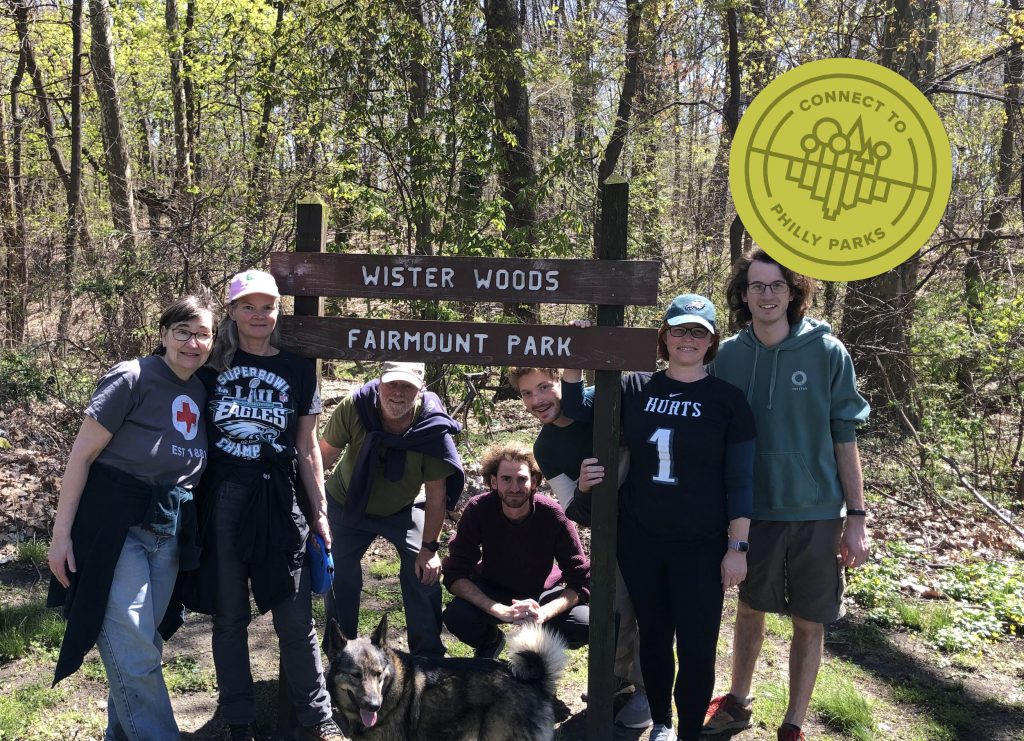The Fairmount Park Conservancy works collaboratively with outstanding community members through projects in Philadelphia’s network of parks. Together, we are maintaining and transforming neighborhood green spaces into community assets. What follows is the second in a two part interview series with Brad Maule of One Man’s Trash and the Fairmount Park Conservancy’s SJ Punderson.
Bradley Maule, 38 year-old Mt. Airy resident, went into the woods and picked up trash deliberately for one year. “Litter has always been my biggest complaint with Philadelphia; It bothers me,” Maule said. “Especially in natural spaces. The natural world is so important to escape the rigors of the city streets.To see litter on the ground in a city park, especially as beautiful as the Wissahickon, is just wrong.”
Maule embarked on a project called One Man’s Trash, in which he hiked for 2-3 hours once a week in the Wissahickon section of Fairmount Park, for the entirety of 2014. In total, Maule estimates that he spent 220 hours collecting and cataloguing trash. He visited the folks at the Fairmount Park Conservancy, hiking up 16 flights of stairs (just kidding, he used the elevator) to talk with SJ Punderson about his experience as Philly’s ambassador de trash.
Is there a solution to the trash problem in the Wissahickon?
A solution? I mean, I wish I could say yes. I definitely have suggestions. I would like to see the ‘Leave No Trace’ principle, ‘Pack It In, Pack It Out’, ‘Give a Hoot, Don’t Pollute’, call it whatever you want to call it. It’s easy to apply, even in a city park. My girlfriend Liz, who grew up around here, was taught to throw biodegradable litter into the woods. Like an apple core, banana peel, orange peel. Those three things in particular are very common. But, even if its biodegradable litter, it’s still litter.
Dave Perry, Streets Department commissioner, on Brad Maule
I’ve asked folks around my office, have we ever analyzed what litter is? So we know how to mitigate it. They give me these vague answers, and nobody really knows. Then I come here, and Brad’s got 3,768 pieces of litter that he has catalogued and broken down into every conceivable category. He’s done a doctoral thesis for the Streets Department.
Maura McCarthy, Friends of the Wissahickon Executive Director, on trash
“People feel like the folks who leave trash must not like it very much. Each piece of trash in this room had someone who put it down on the ground who really loves the Wissahickon. One of two of us might have ‘accidentally’ left our trash in the park once or twice.”
What impact has the Friends of the Wissahickon had on the park?
FOW has grown so much and they have a really active community in the Wissahickon. I think a lot of credit should go to Maura (McCarthy) for her management; in her tenure it’s become an even greater organization with the number of active volunteers. There’s always people coming out to their events.
What can people do instead of drinking out of cheap, plastic water bottles?
Drink out of BPA-free Nalgene bottles. Some people have fears or concerns about tap water but the Philadelphia Water Department does a good job and we have a really good municipal water system.
Any tips for people who want to do their own park-related project?
It’s all about partnerships. If you can partner with an organization, like FOW, that can provide resources or financial support, if that’s what you need, partnering is key. I joined FOW and then developed a relationship with them as a result. I wouldn’t have been able to do this without Philadelphia Parks & Rec. and FOW.
Dave Perry on solutions to the trash problem in Philadelphia
Trash, litter, dumping and short dumping are serious problems in Philadelphia. A clean city is not a luxury, it’s a necessity. Going through City Council now is a plastic bag law, we’re hoping it passes. That’s the first step. Eventually, I think we need to ban plastic bags in Philadelphia. A deposit law for plastic bottles is needed. Other states do it, why don’t we do it? You’ll see this stuff disappear in a hurry if you can get a nickel back for every plastic bottle.
Has the project changed your life?
It has made me think more about the waste that I create. I hope people can take that away from seeing the exhibition of this trash. I think many people assumed I would create a sculpture or create something from it. But for me, the point was to display the trash, and to say, look, this is trash. It doesn’t belong in the Wissahickon.
One Man’s Trash was display at the Fairmount Water Works Museum (640 Water Works Drive, Philadelphia, PA 19130) in the spring of 2015.



